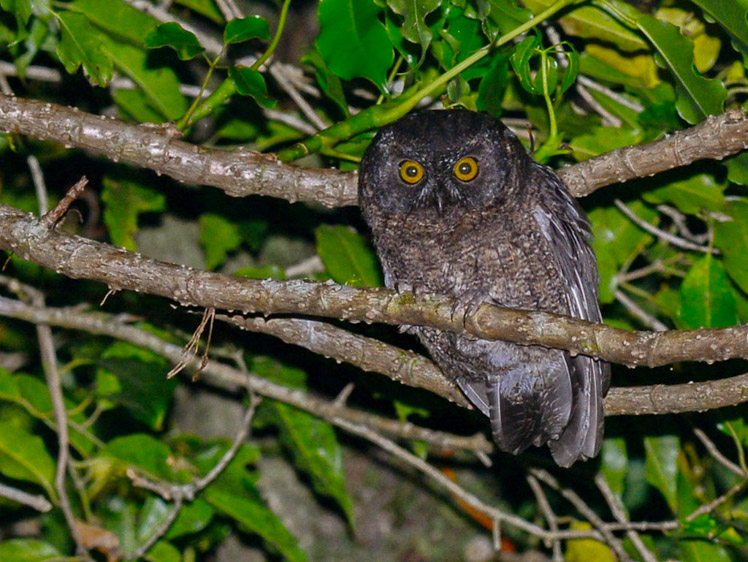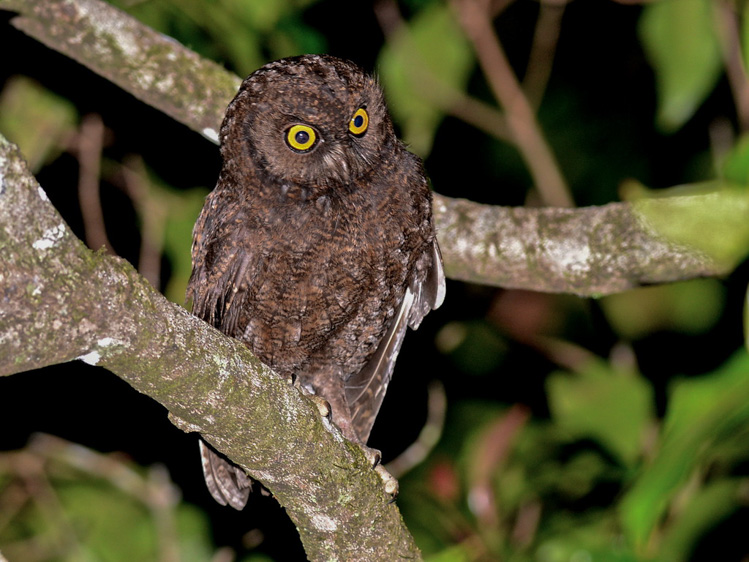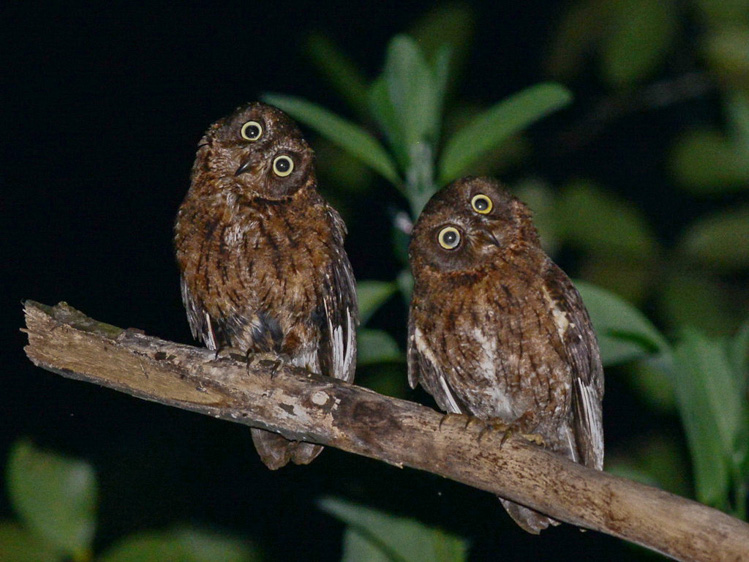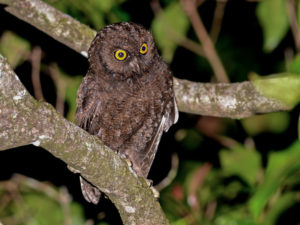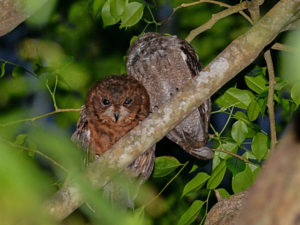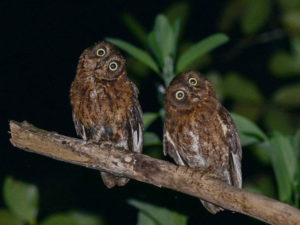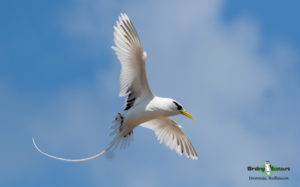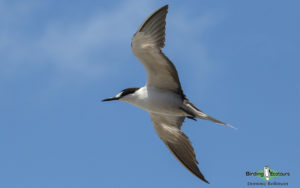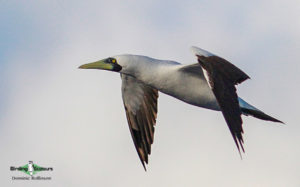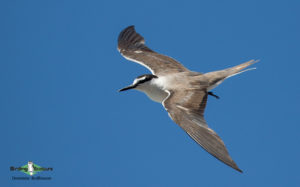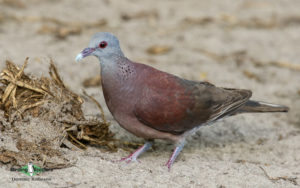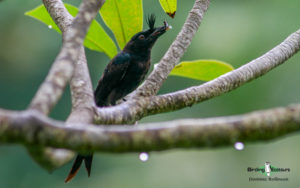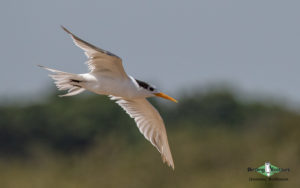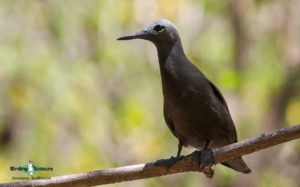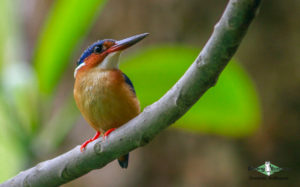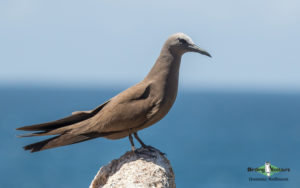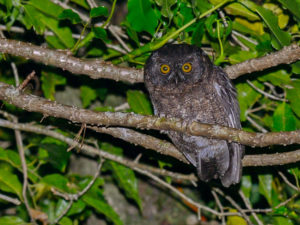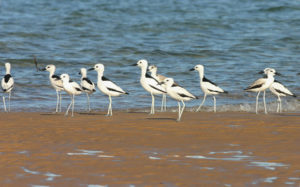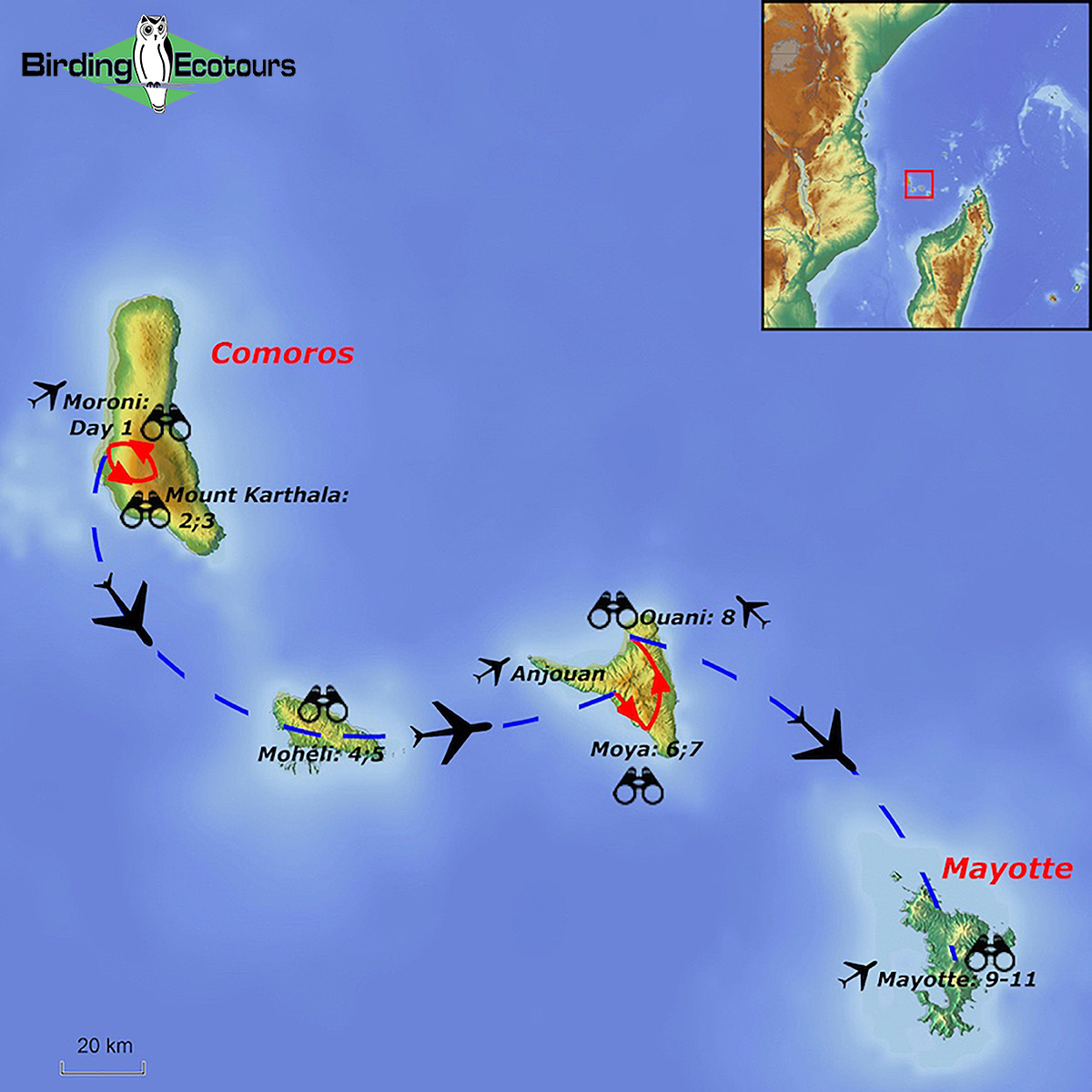Comoros and Mayotte Birding Tour - Conservation Tour
Go to: Comoros Birding Tours | Madagascar Birding Tours | Birding Tours in Africa | Owls of the World Tours | All our birding tours
Birding the Comoros and Mayotte – Conservation Tour
September 2025/2026
During our Comoros and Mayotte birding adventure, we will visit all four islands of the Comoros archipelago. This tour allows a rare opportunity for any serious lister to connect with some of the rarest, most range-restricted, and/or endangered species on the planet. These include Karthala Scops Owl, Moheli Scops Owl, Anjouan Scops Owl (with all three being listed as Endangered by the IUCN), Mayotte Scops Owl, and many other fantastic species, a large number of which are endemic to the Comoros (with their respective subspecies being endemic to their specific island).
Karthala Scops Owl is one of our four owl targets on this tour (photo Alan van Norman).
Apart from the owls mentioned above, we will also target numerous other endemic birds of the Comoros/Mayotte, as well as some more widespread Malagasy/Indian Ocean Islands endemics. These include Comoros Green Pigeon, Comoros Blue Pigeon, several localized white-eyes, brush-warblers and drongos, the beautiful Comoros Fody and Red Fody, Malagasy Paradise Flycatcher, Lesser and Greater Vasa Parrots and lots of others (please see the details within the itinerary below). Crab-plover is another of our targets: although less range-restricted than the other species mentioned, it’s a charismatic, beautiful tropical wader/shorebird.
Not only is the birding spectacular, but so too is the scenery and the variety of fauna and flora that one picks up along the way as a byproduct of the birding.
This tour can be combined with our Birding Tour Madagascar: The Remote North and other of our Madagascar birding tours. We also sometimes add the Seychelles if the whole group wants to do these islands – the endemic Seychelles Scops Owl is easy, as is White Tern, etc. And it is easy for us to also add Mauritius – please just ask. Réunion, Rodrigues and various other tropical islands are also sometimes on the birding menu if you contact us for a custom birding vacation.
We don’t have to camp or do very strenuous walks on this tour like we had to in the past.
This is a conservation tour and we donate at least half (depending on group size) of the tour profits to Dahari. This is an NGO that has been supporting Comorian fishers and farmers to restore their soils, reefs and forests since 2013. They produced the first species distribution models for birds, reptiles and butterflies for all three islands of the Comoros based on field surveys and modelling. They are based in Anjouan, but work in Grande Comore and collaborate with the Mohéli National Park and the Mayotte Naturalists.
Itinerary (11 days/10 nights)
Please note that the domestic flights on this tour can be unreliable and one has to sometimes be philosophical about the itinerary changing. Only two nights are usually needed on each island, but we have factored in two extra nights on the trip to build in buffer time in case we initially miss some bird targets, and in case of problems with the domestic flights. So, the itinerary below may change a bit, but we’ll still target all the species mentioned. Should the group be interested, there are options for rest days on some of the stunning beaches, or immersion days in the culture and communities via our local NGO partner, Dahari.
Day 1. Arrival in Moroni
After arrival at Prince Said Ibrahim International Airport serving Moroni, the capital of the Comoros nation on the island of Grand Comore (local name Ngazidja), you will be transferred to your hotel. Depending on arrival time (although most flights arrive in the afternoon so you may wish to just rest), we may have a bit of time to start getting acquainted with some of the more common birds.
Overnight: Jardin de la Paix, Moroni
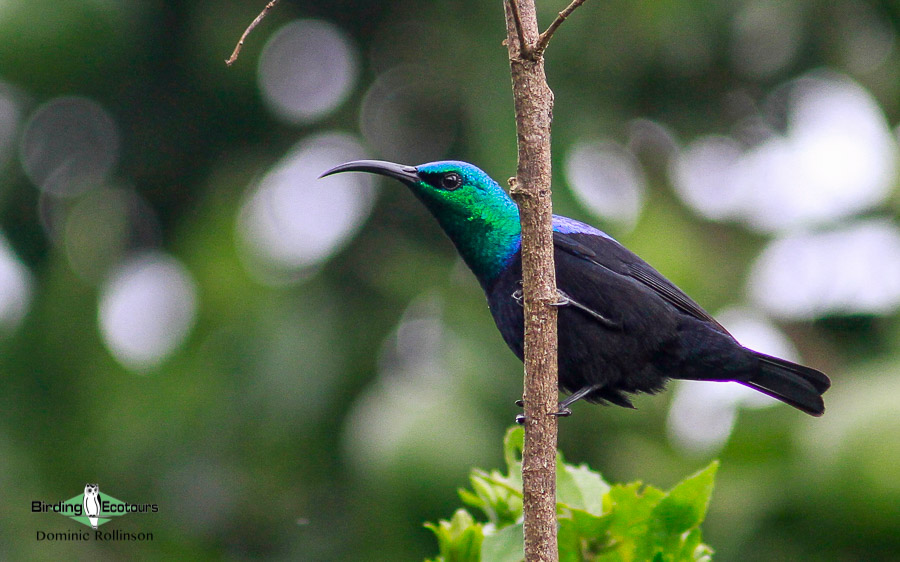
Days 2 – 3. Birding Mount Karthala
We will spend two full days hiking various slopes of Mount Karthala, an active volcano and the highest point of the Comoros. The mountain is covered by moist evergreen forest up to almost 6,000 feet (about 1,800 meters) above sea level; higher up the vegetation consists of stunted trees and heathland.
We are able to drive about two thirds of the way up to the top of the volcano, then walk the rest of the way (usually 1-2 hours depending on the group’s fitness) to see the crater and to bird the heath forest. On private trips, some clients prefer camping on the flank of Mount Karthala, but the targets are still in reach without camping which is what we now arrange for our set departure tours like this one. Karthala Scops Owl does require staying in the forest until after dark, then walking back to the 4×4.
Mount Karthala is an IBA (BirdLife International: Important Bird and Biodiversity Area), and its avian riches are truly exciting. Many of the species found on the mountain are endemic to the Comoros, and four bird species occur only on the slopes of Mount Karthala: Humblot’s Flycatcher, Karthala White-eye, Grand Comoro Drongo, and Karthala Scops Owl. In addition to these very special targets, we hope to find and enjoy species such as Madagascan Spinetail, Malagasy Paradise Flycatcher, Malagasy White-eye, Malagasy Black Swift, Comoros Fody, Malagasy Green Sunbird, Greater and Lesser Vasa Parrots, Olive Bee-eater, Malagasy Bulbul, Malagasy Turtle Dove, African Palm Swift, Malagasy Black Swift, and a number of endemics and near-endemics such as Kirk’s White-eye, Comoros Thrush, Comoros Cuckooshrike, Grand Comoro Bulbul, Comoros Blue Pigeon, Grand Comoro Brush Warbler, and Humblot’s Sunbird during these two bird-filled days.
Overnight: Jardin de la Paix, Moroni
Day 4. Flight to and birding on Mohéli
After our flight (usually in the morning) to Fomboni, the capital of Mohéli (native name Mwali), the smallest of the islands of the Comoros, we again will waste little time before heading for the forests, and with this island being so much smaller, it will take very little time to do so. The Mwali Highlands (Mont Mlédjélé) above Fomboni are also one of the Comoros’ IBAs, and here Humblot’s Sunbird, Malagasy Paradise Flycatcher, and Comoros and Red Fodies should hopefully soon greet us.
There are four bird species endemic to Mohéli that we will be looking for: Comoros Green Pigeon, Moheli Bulbul, Moheli Brush Warbler, and Moheli Scops Owl. Additional specials we might encounter on Mohéli, are Comoros Thrush, Blue Vanga, Tambourine Dove, Malagasy Turtle Dove, Greater Vasa Parrot, Malagasy White-eye, Malagasy Green Sunbird, Malagasy Harrier, spectacular flybys onto the volcanic ridges of Peregrine Falcon, and with luck even the enigmatic Cuckoo Roller, the only member of an ancient lineage (not Coraciiformes), without any known relatives among modern birds and therefore the only species in its own order.
At night, we will have a sortie to try for another one of our main targets, Moheli Scops Owl.
Overnight: Laka Lodge, Niomachoua
Day 5. Birding Mohéli
We will have another full day to search for the avian treasures that the island of Mohéli has to offer. One of the things we might do, is walk down to the village of Nioumachoua and the Mohéli Marine Park, the Comoros’ first national park. (But the exact program depends on what birds we still need to target, and other factors). The islets of this park with their dry or non-existent vegetation are remarkable; their importance lies in their attraction for seabirds. In particular we will look for White-tailed Tropicbird as well as various other marine species. The part of the park extending onto the land is home to Comoros Thrush, Moheli Brush Warbler, and Blue Vanga, among many others, and offers us another chance of finding Moheli Scops Owl.
Overnight: Laka Lodge, Nioumachoua
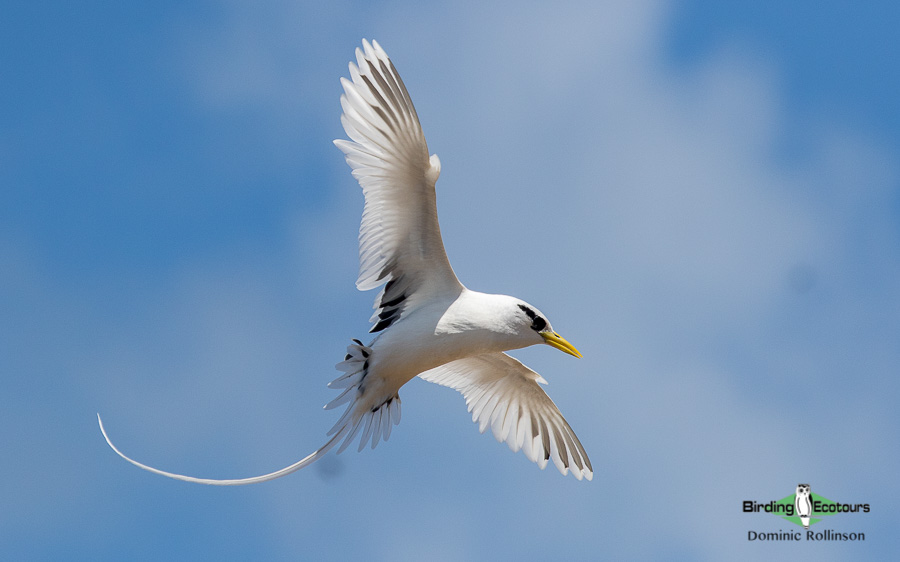
Day 6. Flight to Anjouan, birding the Moya area
After driving to Fomboni in the morning, we will take a flight to Anjouan (native name Ndzuwani). Called the ‘pearl of the Comoros’ by its residents, Anjouan is no doubt the most scenic island of the Comoros, and our drive along the coast from the airport at Ouani via Bimbini with its stunning beaches, to Moya, is beautiful indeed. On the way, we will look out for various seabirds like Sooty Tern, Masked Booby, Tropical Shearwater, Brown Noddy, and White-tailed Tropicbird.
After arrival in Moya and checking into our rustic but adequate accommodation (serving excellent lobster!), we will commence our birding adventure in the area. In the evening, we will tackle a rather steep climb up the hillside to a known stakeout for the third of our very special owl targets, Anjouan Scops Owl.
Overnight: Sultan Hotel, Moya
Day 7. Anjouan, birding Moya Forest
Today we’ll walk into Moya Forest (Forêt de Moya, another one of the Comoros’ IBAs) in the early morning and will spend the day birding in the forest. Here we’ll look for Anjouan Brush Warbler and Anjouan Sunbird, as well as for Frances’s Sparrowhawk, Comoros Olive Pigeon, Comoros Blue Pigeon, Lesser Vasa Parrot, Olive Bee-eater, Crested Drongo, Malagasy Paradise Flycatcher, Malagasy White-eye, Comoros Thrush, Comoros Fody, Malagasy Harrier, and, as always, many others. We also hope to visit a roost of Livingstone’s Flying Foxes, the rarest fruit bat in the world, which feed on the agroforests scattered along the hillsides.
In the evening we’ll try once more for Anjouan Scops Owl and then spend the night at the very scenic town of Domoni, which has a stunning medina.
Overnight: one of two decent hotels in Domoni
Anjouan Scops Owl, an endemic owl target on Anjouan (photo Alan van Norman).
Day 8. Anjouan, birding Lac Dzialandzé, transfer to Ouani
Today we will explore a new section of the island as we head for Lac Dzialandzé, a small crater lake nestled between volcanic ridges. Traversing a variety of habitats along the way, we once more could be locating all the endemics of the island, such as Anjouan Sunbird, Comoros Thrush, Anjouan Brush Warbler, Malagasy White-eye, and Anjouan Scops Owl. Other species both en route and at the lake itself may include Comoros Fody, Common Quail, Little Grebe, and Comoros Blue Pigeon. We hope to get the most remarkable views of what appear like prehistoric pitch-black creatures, Livingstone’s Flying Fox, also called Comoros Flying Fox, endemic only to Mohéli and Anjouan. Circling overhead, we’ll enjoy these, the largest bats in the world, with wingspans of up to 1.4 meters.
In the afternoon, we will return to Mutsamudu to be close to the airport for our flight to Mayotte in the morning.
Overnight: Hotel Jasmin, Mutsamudu or Hotel Bleché, Ouani
Day 9. Flight to Mayotte, birding Mayotte
Our flight to Mayotte will be a short one. On the ferry, which will take us from the small island on which the airport is situated to the main island, we might be able to observe White-tailed Tropicbirds.
The birding here will again be active and exciting; the catchment for the town of Combani extends into the Mlima Combani and Mlima Mtsapéré IBA. Here we hope to find the Mayotte endemics Mayotte White-eye and Mayotte Drongo, as well as many other interesting species, such as Malagasy Pond Heron, Olive Bee-eater, Comoros Fody, Malagasy Turtle Dove, the gigantic Comoros Olive Pigeon, Comoros Blue Pigeon, Frances’s Sparrowhawk, Malagasy Black Swift, Malagasy Paradise Flycatcher, Malagasy Bulbul, Mayotte Sunbird, and Malagasy Kingfisher. In the evening, we will search for our final scops owl target of the trip, Mayotte Scops Owl.
Overnight: Gîte du Mont Combani, Combani
Mayotte Scops Owl —yet another endemic (photo Alan van Norman).
Day 10. Birding Mayotte
We have another full day on Mayotte to look for all the island’s special birds. Our accommodation’s grounds are large and wooded and should yield quite a number of species in beautiful surroundings, with the sea in the background. Brown Lemur, introduced to Mayotte, is frequently seen around the grounds. We will also take an outing to see various interesting seabirds and waterbirds, in particular we’ll keep a lookout for Malagasy Pond Heron, Humblot’s Heron, Lesser Crested Tern, Brown Noddy, and Crab-plover.
In the evening, we can do another outing for Mayotte Scops Owl if we missed it the night before or if you want better views or photos.
Overnight: Gîte du Mont Combani, Combani
Day 11. Departure
Today our international flights will leave from Dzaoudzi-Pamandzi International Airport.
Please note that the itinerary cannot be guaranteed and can be changed (usually slightly) due to factors such as availability of accommodation, updated information on the state of accommodation, roads, or birding sites, the discretion of the guides and other factors. In addition, we sometimes have to use a different international guide from the one advertised due to tour scheduling.
Download Itinerary